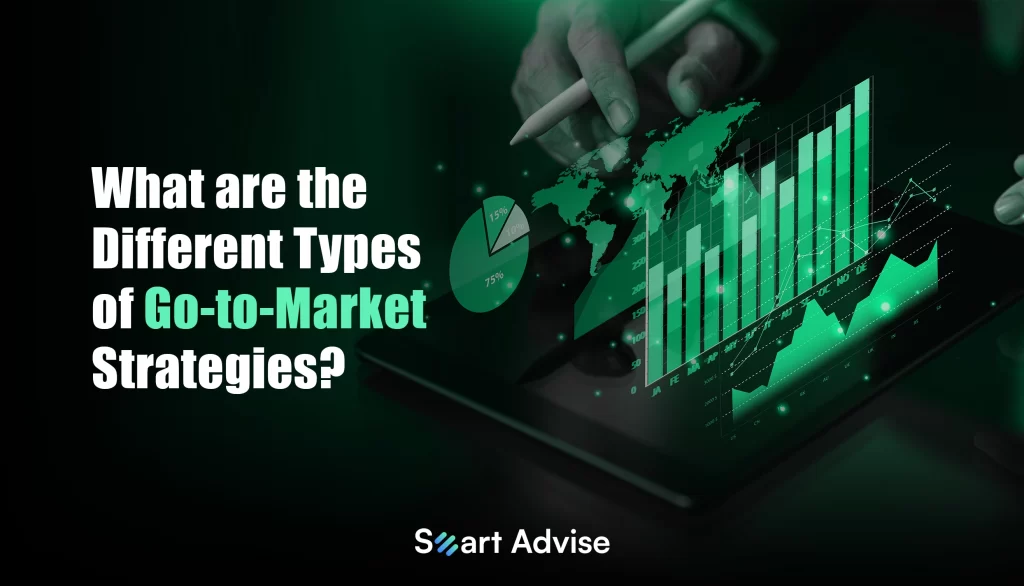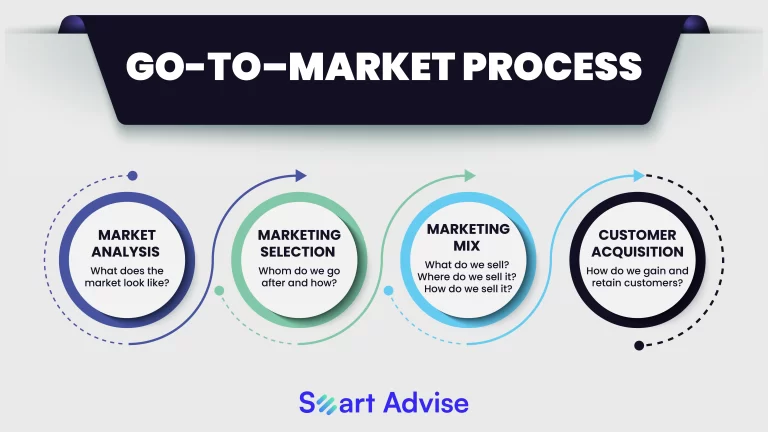
From product launch to distribution channel excellence, find out how Go-To-Market (GTM) strategies can upturn your brand. Discover various GTM tactics in this guide.
Just to exist with great products and relying on mere word of mouth won’t help any product to stay in the business in the long run, and the isn’t any gravity for profitability too. Thus GTM (go-to-market) strategy is the answer to gum your brand in the marketplace. It solidifies the brand’s presence and forms a clear establishment, right from the launch of the product to forming an effective distribution channel. GTM is one such strategy that can be approached in multiple ways, some of the main ones are mentioned in detail below…
The Direct Sales Approach
The direct sales approach is a traditional GTM strategy where a company directly sells its product or service to its target customers. This method typically involves a sales team, both inside and outside sales representatives, and a well-defined sales process. According to a report by Grand view research, from 2023 to 2030, the global direct selling market is projected to expand from its 2022 valuation of USD 200.14 billion at a CAGR of 6.4%.
Companies like IBM and Oracle use direct sales to sell their software and hardware solutions. It enables them to maintain a high level of control over the sales process, customer relationships, pricing and to control monopoly.

Pros:
- Greater control over the sales process and customer interactions.
- Direct feedback from customers.
Cons:
- High operational costs.
- Limited scalability compared to other GTM strategies.
Indirect Sales and Channel Partners
When distributors, retailers, or resellers are involved in the operation channels, they come under indirect sales umbrella. This approach is common in industries like consumer electronics and software. According to Statista, the global market for distribution systems was estimated to be worth roughly $7.5 billion in 2022. Around 2029, its size is expected to have doubled to about $14.6 billion USD.
For example, Apple utilizes a network of authorized retailers and carriers to make its products accessible globally. This strategy allows them to expand their market reach while reducing the burden of direct sales.
Pros:
- Increased market reach and brand visibility.
- Lower operational costs.
Cons:
- Reduced control over the sales process and customer interactions.
- Potential channel conflicts.
Online Sales and E-commerce
With the internet boom, e-commerce platforms have revamped the way companies sell their products. According to Statista, Shopping online totaled about 19% of all retail sales in 2022. The proportion of online sales to overall retail sales is expected to approach 25% by 2027.
Companies like Amazon and Shopify have mastered this GTM strategy. They provide a platform for businesses to reach a vast online audience. This approach offers convenience for customers and enables businesses to tap into the growing world of online shopping.
Pros:
- Global reach and scalability.
- Reduced overhead costs compared to physical retail.
Cons:
- Intense online competition.
- The need for effective digital marketing and customer support.
Freemium and Subscription Models
Software as a Service (SaaS) companies often utilize freemium and subscription models as their go-to-market strategy. These models offer a free basic version of the product, allowing users to upgrade to a premium version with added features. Statista reported that the software as a service (SaaS) market is projected to be valued around $197 billion U.S dollar in 2023 and $232 billion U.S dollar in 2024.
Companies like Dropbox and Spotify have thrived with freemium models. These strategies attract a broad user base and convert a portion into paying customers. It’s a compelling approach for offering value upfront while monetizing through premium features.
Pros:
- Low entry barrier for users.
- Predictable and recurring revenue streams.
Cons:
- Need to balance the value provided in free and premium versions.
- Churn rate management.
Inbound Marketing
Inbound marketing focuses on attracting customers through content creation, social media, and search engine optimization (SEO). HubSpot, a pioneer in inbound marketing, reported that inbound marketing delivers 54% more leads into the marketing funnel than traditional outbound marketing.
Inbound marketing is cost-effective and customer-centric, emphasizing the creation of valuable content that educates and engages potential customers.
Pros:
- Cost-effective lead generation.
- Building trust and brand authority.
Cons:
- Takes time to see substantial results.
- Requires skilled content creation and SEO expertise.
Account-Based Marketing (ABM)
Account-based marketing is a personalized approach to GTM strategy, targeting specific high-value accounts or customers.
ABM is commonly used in B2B markets where relationships with key accounts are critical. This strategy involves close coordination between marketing and sales teams to tailor messaging and campaigns to specific target accounts.
Pros:
- Highly personalized approach.
- Focused on high-value accounts.
Cons:
- Resource-intensive and time-consuming.
- Limited scalability to a large number of accounts.
Viral Marketing
Viral marketing relies on word-of-mouth and social sharing to promote a product or service. It encourages users to share content or refer friends in exchange for rewards or discounts. Statista reported that more than doubling from 2019 levels, the influencer marketing industry’s global market value reached $16.4 billion in 2022.
Companies like Airbnb and Uber have benefited from viral marketing by offering referral incentives to their users. This approach leverages user networks to spread brand awareness and drive growth.
Pros:
- Rapid and organic growth.
- Capitalizes on social networks and user-generated content.
Cons:
- Risky and unpredictable results.
- High dependency on user engagement and sharing.
In Conclusion
The choice of a go-to-market strategy can significantly impact a company’s business. The key is to select the strategy that aligns with the product, target audience, and the company’s resources. Whether it’s direct sales, online sales, freemium models, or any other approach, companies must be agile and open to adapting their strategies as the market evolves.
By understanding these different GTM strategies and how they’re implemented, businesses can ensure significant growth and success. To execute any of the GTM strategy effectively, connect with us at vereigen media now!